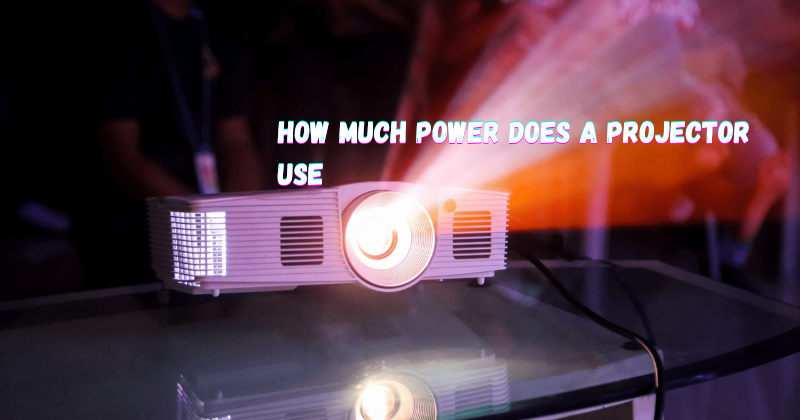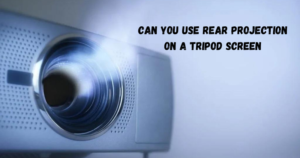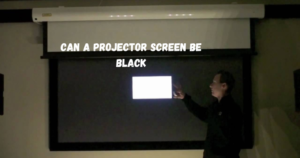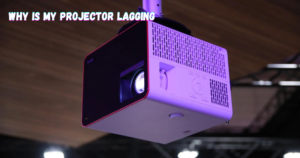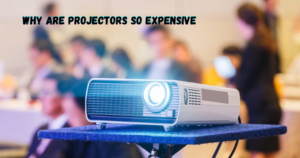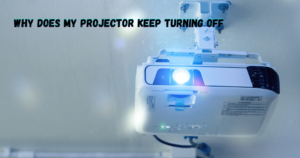A projector is an electronic device that projects images, videos, or data onto a larger surface, such as a wall or screen. It has become an essential tool in classrooms, business presentations, and home entertainment systems.
As with any electronic device, one of the main concerns for users is its projector power consumption. We will see how many watts a projector system uses and how to minimize its energy usage.
In this article, we will discuss how much power a projector uses and what factors affect its power consumption. However, the exact amount of power used by a projector can vary depending on several factors. Additionally, advancements in projector technology have allowed for more efficient use of power consumption.
How Much Power Does A Projector Use
The power consumption of a projector varies depending on its type, model, and usage. On average, a standard home theater projector uses between 200 to 300 watts while in use. This is equivalent to the energy used by two or three LED light bulbs.
However, some high-end projectors can consume up to 500 watts or more. The power usage of a projector also depends on the amount of time it is used, and leaving it on for extended periods can significantly increase energy consumption.
Furthermore, the brightness of the projected image also affects power usage. Higher brightness levels require more energy to produce a clear and bright image. So many types of projector available in market like laser projectors, LCD projectors, and DLP projectors. Each type has its own power consumption rate.
Factors That Affect Power Consumption of a Projector
The following are some factors that contribute to the power consumption of a projector:
Type of Projector
The type of projector plays a significant role in determining its power usage. There are mainly two types of projectors: LCD (Liquid Crystal Display) and DLP (Digital Light Processing). LCD projectors use more power than DLP projectors as they require a separate bulb for red, green, and blue colors, while DLP projectors use only one bulb.
Additionally, LCD projectors have more complicated technology, resulting in higher power consumption. Epson projector, BenQ projector and other LCD projectors generally use more power than DLP projectors like Optoma projector or LG projector. LED projectors , on the other hand, use significantly less power as they rely on LED lights rather than a traditional bulb.
Brightness
The brightness of a projector is measured in lumens. The higher the brightness, the more power it consumes. A projector with 2000 lumens will use less energy than one with 4000 lumens, as it requires less power to produce a dimmer image. It is essential to consider the brightness required for your specific use case, as higher brightness may only sometimes be necessary and can result in unnecessary power usage.
Projection Distance
The distance between the projector and the screen also affects its power consumption. The further away the projector is, the more energy it needs to project a clear image. This is because a longer projection distance requires a brighter bulb or higher lumens to compensate for the loss of light during projection. It is recommended to place the projector as close to the screen as possible to reduce power consumption.
Projected Image Size
The size of the projected image also plays a role in determining a projector’s power consumption. A larger image requires more lumens and, thus, more power compared to a smaller image. Therefore, it is important to adjust the projector’s zoom and focus settings according to your desired image size. This will not only improve the image quality but also save energy.
Projection Mode
Most projectors have different projection modes, such as standard, economy, and high brightness modes. These modes vary in power consumption, with high brightness mode using the most power. It is recommended to use the economy or low brightness mode whenever possible to reduce energy usage.
Average Power Consumption of a Projector
The average power consumption of a projector ranges from 200 watts to 400 watts. However, this can vary depending on the factors mentioned above. A smaller and less powerful projector may use around 150 watts, while a high-end professional projector may consume up to 1000 watts. It is crucial to check the manufacturer’s specifications for each model to determine its exact power usage.
Best Way to Measure the Power Consumption of Your Projector
If you want to measure the power of the projector, try these methods to better know how much consumption of your projector is.
Find the wattage of your projector.
You can find the wattage of your projector by checking its manual or looking at the label on its power cord. The wattage will be listed as volts x amps, and you can use this formula to calculate the watts. Furthermore, you can also use a watt meter to measure the exact power consumption of your projector.
Use a Kill-A-Watt Meter
A Kill-A-Watt Meter is a device that measures the electricity usage of an appliance. You can plug your projector into this device, and it will show you the exact watts used by it. This is a more accurate method of measuring power consumption and can be helpful in determining which settings or modes consume the most power.
Use an Energy Meter
An energy meter is a device that can measure the power consumption of any electronic device. You can plug your projector into the energy meter and turn it on to see its exact power usage. This method will give you the most accurate results. This watt-measuring device will tell us the amount of electricity used by a gadget or machinery.
Calculate your watt-hours per day.
Another way to measure the power consumption of your projector is by calculating how many watts it uses per day. You can do this by multiplying its wattage by the number of hours you use it daily. For example, if your projector uses 300 watts and you use it for 5 hours every day, the calculation will be 300 x 5 = 1500 watts. You can then use this number to estimate your monthly or yearly energy consumption and cost. You can also test projector in watts per hour to know the precise power use.
Calculate your projector’s monthly power consumption.
To calculate your projector’s monthly power consumption, multiply its watt-hours per day by the number of days in a month. For example, if your projector uses 1500 watt-hours per day and there are 30 days in a month, the calculation will be 1500 x 30 = 45000 watt-hours or 45 kWh (kilowatt hours). You can use this number to estimate your monthly electricity bill and adjust your usage accordingly to save energy.
Tips to Minimize Power Usage of a Projector
Here are some tips that can help you minimize the power consumption of your projector:
- Please turn off the projector when not in use, as it continues to consume standby power.
- Use the economy or low brightness mode whenever possible.
- Keep the projector’s air vents clean to ensure proper cooling and avoid overheating, which can result in higher power consumption.
- Adjust the projector’s settings according to your specific needs, such as image size and projection distance.
- Use a power strip to easily turn off the projector and its peripherals when not in use.
Follow these tips to not only reduce your energy bill but also contribute towards a more sustainable environment. Overall, understanding the factors that affect power consumption and implementing energy-saving measures can go a long way in reducing the environmental impact of using projectors. With advancements in technology, we can expect to see more energy-efficient projectors in the future, making it easier for us to enjoy high-quality projections while minimizing our carbon footprint.
Do Projectors Use More Electricity Than TVs and ACs?
The electricity consumption of a projector generally depends on the resolution and brightness that needs to be displayed. Compared to traditional TVs, projectors can consume more electricity due to their high brightness and larger image size.
However, modern projectors are becoming more energy-efficient, and their power usage is similar or even lower than some high-end TVs. On the other hand, air conditioners generally use much more power than both projectors and TVs. Modern LED TV consume around 150-200 watts, while a typical air conditioner can use up to 1000 watts.
It is essential to consider the overall Tv power consumption of all your electronic devices to effectively manage your energy efficiency usage and reduce your environmental impact. So, if you are considering purchasing a projector for home or office use, make sure to research its power consumption and choose an energy-efficient model that meets your needs.
FAQs
Can you leave a projector on 24/ 7?
It is not recommended to leave a projector on 24/7, as it can cause wear and tear and increase electricity costs. It is best to turn off the projector when not in use or set it to automatically shut down after a certain period of inactivity.
Can projectors overheat?
Yes, if not properly ventilated or maintained, projectors can overheat, which can lead to higher power consumption and potential damage to the device. It is important to follow the manufacturer’s guidelines for proper usage and maintenance of your projector.
Are projectors cheaper to run?
Projectors can be cheaper to run compared to traditional TVs, especially for large screen sizes. However, it ultimately depends on the specific model and usage pattern. It is best to compare the energy consumption of different projectors before making a decision. Overall, understanding the power usage of your projector and implementing energy-saving practices can help you save money in the long run.
What are the disadvantages of a projector?
Some potential disadvantages of projectors include higher initial cost, lower brightness compared to TVs in well-lit rooms, and the need for a dedicated projection screen. However, these factors can vary depending on the specific model and usage scenario.
Conclusion
In conclusion, projectors are a convenient and versatile tool for displaying high-quality images and videos. However, like any electronic device, they consume electricity and have an environmental impact. By understanding and managing the power consumption of your projector, you can not only save money on energy bills but also contribute towards a more sustainable future.
With the availability of various energy-saving options and advancements in technology, we can enjoy the benefits of projectors while minimizing their impact on the environment. So go ahead and use these tips to keep your projector’s power usage in check without compromising on its functionality or performance.
